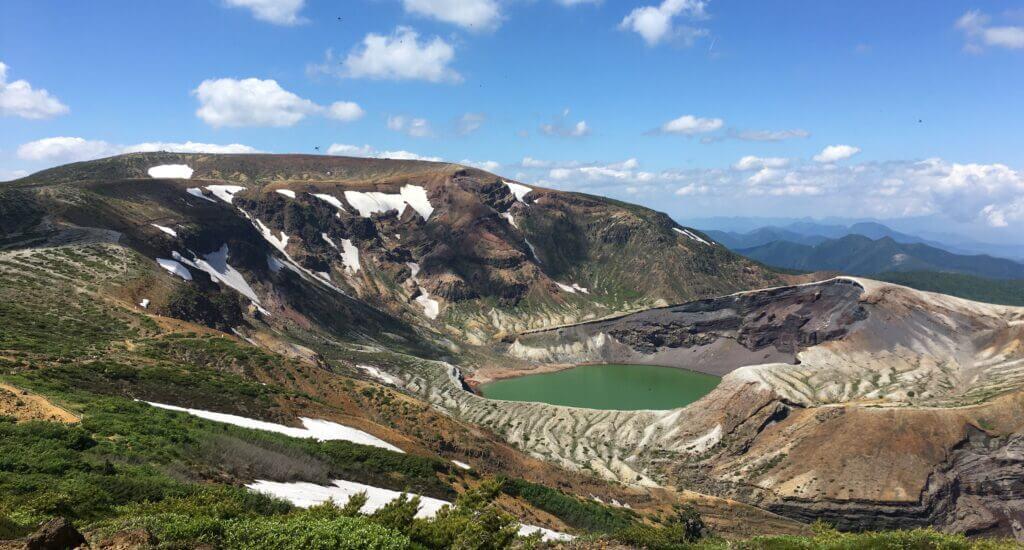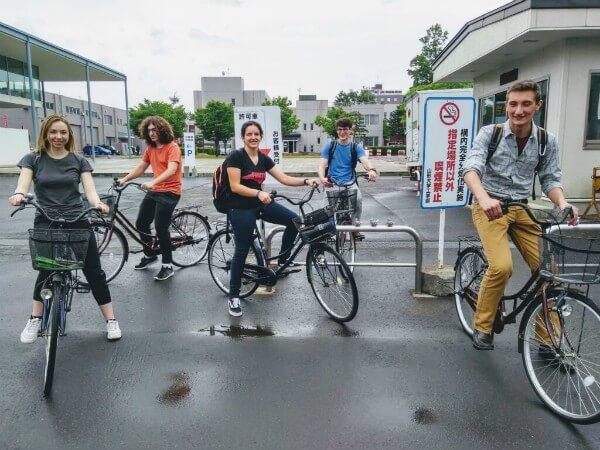
Physics major Grayson Glosser of Barre, VT was planning on spending the summer of 2019 doing research while moonlighting at a central Vermont restaurant. He accomplished the first part of his plan, but his lab was located in Yonezawa, a small city in north-central Japan, rendering a daily I-89 commute moot
Glosser decided to join the first contingent of students to participate in a new International Research Experience for Students (IRES) at Yamagata University. The two-month interdisciplinary program combines materials science research with in-depth cultural immersion.
“I had never been abroad, and I was intrigued by the idea of living in a foreign country while pursuing my research interests,” said Glosser. “The more I learned about it, the more I realized I couldn’t say no.”
The IRES at Yamagata University was developed by Associate Professor of Physics and Materials Science Program Director Madalina Furis and Assistant Professor of Physics Matthew White, who obtained funding through a three-year National Science Foundation Grant.
Furis is a native of Romania and an evangelist for the importance of international science exchange. As a child she loved studying foreign languages and saw language as a gateway to other cultures.
“While maturing as a scientist in the American academic and research environment, I recognized the fundamental need for effectively communicating with colleagues working in Asia or Europe,” she said. “They often bring distinct and interesting approaches to research problems that could enrich our own way of thinking.”
Furis has learned that barriers go beyond language. There are also deeply rooted differences in how scientists in different cultures approach research. “Today’s top scientists must be sophisticated, well-educated, well-traveled individuals, able to network and establish collaborations all across the globe,” she says.
Furis made her visit to Yamagata University three years ago. She was impressed by Yonezawa’s traditional ties in polymer science and engineering—the city was the birthplace of rayon and the white light organic light emitted diode (WOLED), two advances that occurred 100 years apart. She also discovered a remarkable group of Yamadai scientists, passionate about organic electronics and soft matter research.
Her visit was the origins a UVM-Yamagata collaboration which now includes 15 faculty members between the two institutions. A big emphasis is placed on interdisciplinary learning—faculty participants come from a range of backgrounds including chemistry, physics and materials science, chemical engineering and education. UVM Associate Professor of Education Regina Toolin is involved in the project to assess the educational outcomes and impact of the IRES.

For students, the first phase of the program involved a two-week crash course in Japanese language provided by UVM Professor Kyle Ikeda. At the same time, students worked with UVM faculty mentors to plan experiments they would perform in Japan.
Glosser took the language mini-course seriously, listening to Japanese instructional tapes between lessons. “My goal was to be able to at least communicate with the people I met there,” he said.
Naturally outgoing and gregarious, Glosser broke the ice his lab by demonstrating his willingness to speak Japanese, however haltingly. “I really felt close to the people I worked with,” Glosser said. “A lot of it had to do with sensei Tsukasa Yoshida (Glosser’s faculty mentor in Japan). He knew English really well and made me feel at home, both in the lab and in the community.”
Glosser is interested in thin film research, the process of using organic materials to create more efficient solar cells. He was able to seamlessly continue the work he started with his UVM mentor Matt White in Yoshida’s lab.
He and his American cohorts, fellow UVM students Georgia Babb and Adam Dyer, and two others from Princeton and North Carolina State University, worked long days in the lab during the week but had plenty of free time to explore Yonezawa. One of his first expeditions, shortly after the long flight from Newark to Tokyo, was hiking up a nearby mountain in the Akashibamachi highlands, a volcanic range tantalizingly close to the city. Other excursions included a trip to Tokyo, a hike up Mt. Fuji, and picking cherries during the traditional cherry harvest season.